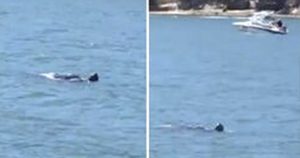By Kara Dubois
Lightning strike
Galton Firies recently worked to put out a fire in Galston after a lightning strike hit a tree, causing it to explode and catch on fire. Whilst the fire was extinguished quickly, it’s worth remembering that lightning strikes can be the start of devastating fires. Last year’s fire season saw the Gosper’s Mountain fire ignite from a lightning strike on October 26, 2019. It burnt through more than 512,000 hectares across the Lithgow, Hawkesbury, Hunter Valley, Cudgegong, Blue Mountains and Central Coast local government areas.
It’s important not to get complacent. Only 6.9% of NSW was impacted by bush fire in the 2019/20 fire season. This means there is a significant bush fire risk for the coming 2020/21 fire season. It only takes five minutes to improve or make a plan that will give your property, your family and yourself the best chance of survival.
Get ready now at myfireplan.com.au
Know the Alert Levels
During a bush fire, Alert Levels are used to give you an indication of the level of threat from a fire. Remember – don’t wait for a warning. Some fires start and spread so quickly there may not be any time for a warning. If you get a Bush Fire Alert, you must take it seriously.
If there’s a fire in your area, keep track of the alert level so you know what you should do.
ADVICE level means a fire has started. There is no immediate danger. Stay up to date in case the situation changes.
WATCH AND ACT means there is a heightened level of threat. Conditions are changing and you need to start taking action to protect you and your family.
EMERGENCY WARNING is the highest level of Bush Fire Alert. You may be in danger and need to take action immediately. Any delay now puts your life at risk.
Preparing an Emergency Survival Kit
Now is the time to consider what you’ll pack in your Emergency Survival Kit for the bush fire season. Having a prepared kit means having easy access to things that can help you survive a bush fire or other natural disaster. Keep your Emergency Survival Kit in a waterproof storage container in a location that is easy to get to and that the whole family knows about. This will make it quick and easy to find when you need it.
The seven essential items to pack in your Survival Kit are:
• A portable battery-operated radio
• A waterproof torch
• Spare batteries
• A first aid kit with manual
• Woollen blankets
• Emergency contact numbers
• Drinking water.
Add cash and credit cards; medications and toiletries; special requirements for children, the disabled or the elderly; a mobile phone and charger; important documents; and a change of clothes for everyone before you leave.
Don’t forget to prepare for your pets as well. Make sure your pet is wearing an identification tag. If you’re leaving, take a leash, basket, medication, food and a familiar toy for your animal. It will help reduce stress.
For more fire related information please visit the RFS website: www.rfs.nsw.gov.au or call the Bush Fire Information Line – 1800 NSW RFS (1800 679 737) BRIGADE CONTACT DETAILS: Duty mobile: 0491 119 152 Email: [email protected]










